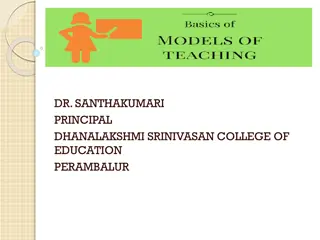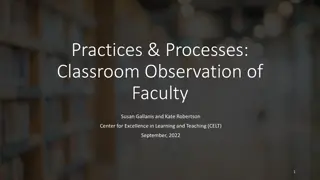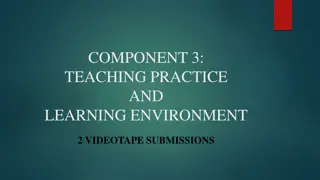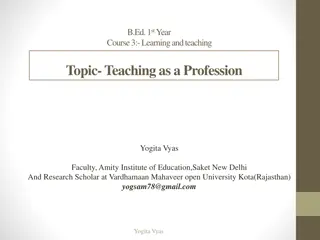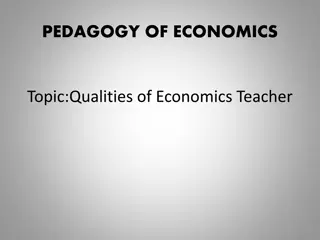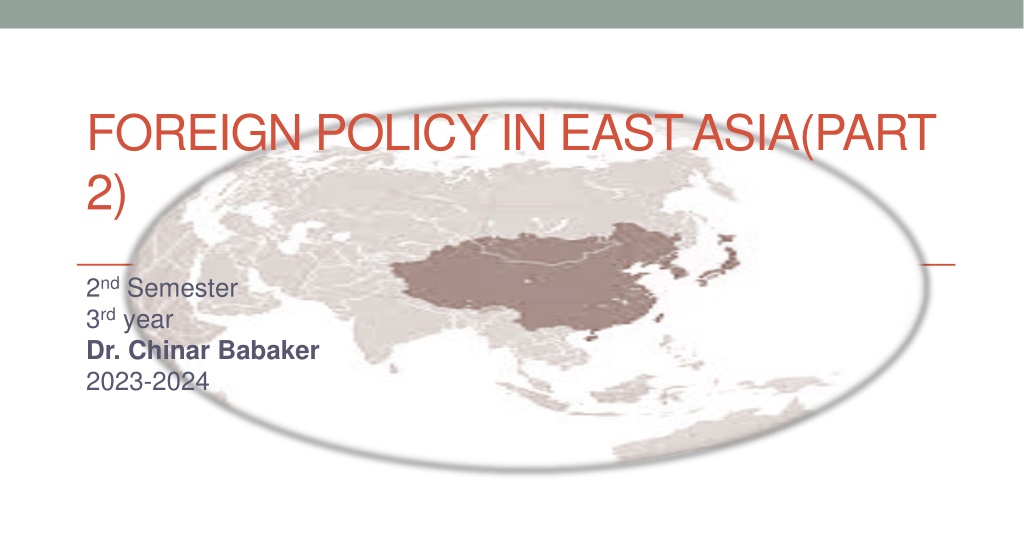
Understanding Foreign Policy in East Asia: Part 2
Explore the complexities of foreign policy in East Asia focusing on countries like China, Japan, North Korea, and South Korea. Delve into the historical background of Hong Kong and its transition from a British colony to a special administrative region of China. Learn about the concept of "One Country, Two Systems" governing Hong Kong's autonomy till 2047.
Download Presentation

Please find below an Image/Link to download the presentation.
The content on the website is provided AS IS for your information and personal use only. It may not be sold, licensed, or shared on other websites without obtaining consent from the author. If you encounter any issues during the download, it is possible that the publisher has removed the file from their server.
You are allowed to download the files provided on this website for personal or commercial use, subject to the condition that they are used lawfully. All files are the property of their respective owners.
The content on the website is provided AS IS for your information and personal use only. It may not be sold, licensed, or shared on other websites without obtaining consent from the author.
E N D
Presentation Transcript
FOREIGN POLICY IN EAST ASIA(PART 2) 2ndSemester 3rdyear Dr. Chinar Babaker 2023-2024
Countries located in East Asia Japan China Taiwan Hong Kong(Special administrative region) 1997 Macau(special administrative region) 1999 North Korea South Korea Mongolia
Overview on East Asia countries Change and continuity : China: Despite its embrace of capitalist and market principles, China is still dominated by an authoritarian, nondemocratic, and communist political regime. North Korea: very little social, political, and economic changes since the establishment of Communist state 1948. with poor record economy
Special administrative regions Hong Kong Macau
Hong Kong Hong Kong was British colony from 1842, but under the agreement between both country of British and China, Hong Kong transferred to china Sino-British Joint Declaration 1984 : is a treaty between the governments of the United Kingdom and China signed in 1984. the conditions in which Hong Kong was transferred to Chinese control and for the governance of the territory after July 1, 1997.
But the treaty had some principle of submit the special administrative region to Hong Kong with high degree of autonomy except , defense and foreign affairs.
One country and two Systems Hong Kong in governing and economic affairs deals independently but under the principle of One country and two Systems This principle must be remained unchanged for 50 years after 1997(till 2047)
The contradiction with 50 years unchanged policy: Since 2014, the Chinese and Hong Kong governments have stated that the Joint Declaration no longer has legal effect as a result of the transfer of sovereignty, and that the central government's basic policies as outlined in the document were merely a unilateral declaration that was not legally binding.
These statements are directly contradicted by the 50-year period of unchanged policies in Hong Kong that the central government committed to as part of the Joint Declaration.
Differences of Hong Kong citizens with mainlander of china There are differences in culture and political backgrounds between those from Hong Kong and China. Hong Kong was ruled by the British based on the system of Letters Patent from the 1850s to 1997, whereas China has been under the control of the Communist Party of China from 1949 onwards. The people of Hong Kong see Chinese as a totally different culture and education.
The emergence of new parties in Hong Kong brought the new path of aspiration of independence for Hong Kong particularly when the One country and two Systems suppose to expire in 2047. They ask for referendum
Hong Kong political system Hong Kong adopts an executive-led political system and the executive branch, headed by the Chief Executive, plays the dominant and leading role in the operations of the entire political system, including the making of public policies, the legislative agenda and the operations of the government. The three branches of the government, as we often hear, refer to the executive, legislative and judicial branches.
Hong Kong Autonomy Act The Act was signed into law by US President Donald Trump on 14 July 2020, and imposes sanctions on officials and entities in Hong Kong as well as in mainland China that are deemed to help violate Hong Kong's autonomy, and punishes financial institutions that do business with them.
Sino-Portuguese Joint Declaration for Macau The Joint Declaration on the Question of Macau, or Sino-Portuguese Joint Declaration, was a treaty between Portugal and the People s Republic of China over the status of Macau. Signed on 26 March 1987 the Declaration established the process and conditions of the transfer of the territory from Portuguese rule to the People's Republic of China.
The Joint Declaration served also as the main source of fundamental rights that were implemented in the Macau Special Administrative Region Basic Law.
Once Country, two systems The system of One country, two systems " excluded Macau from the Socialist system and several laws decreed by the central government in Beijing. The capitalist, legal system and liberal society enjoyed by Macau would remain unchanged for a minimum of 50 years after the transfer.
The Chinese government would not impose taxes on Macau or pass laws governing the territory. Except for foreign affairs and defense, which would remain under Chinese sovereignty, the Macau SAR(Special Administrative Region) would have a tremendous deal of autonomy. Macau s majority are pro-China, what happened in Hong Kong hasn t spread in to Macau
Disputed territory of Taiwan Republic of China ( ROC)
Country in the East Asia Sharing maritime bordering with China 1911: the Republic of China overthrown Qing dynasty, Civil war in China: Between the Kuomintang (KMT) led government of the Republic of China (ROC) and forces of the Chinese Communist Party (CCP) lasting intermittently between 1927 and 1949.
Chinese Communist Party won the war and took the control of the country, so the Republic of China ( ROC) retreated to Taiwan and since then they governing the Taiwan since 1947 and never accept the role of PRC .
After UN members agreed in 1971 to recognize the PRC instead of the ROC, the ROC no longer represents China as a member of the UN. Meanwhile, the ROC has maintained its claim to be the official representative of China and its territory, though this has been minimized since the 1990s
U.S. Supports ROC (Taiwan) From 1954 through 1979, the US and Taiwan had a mutual defense treaty. The United States remains one of Taiwan's main supporters, selling arms and providing military training to the Armed Forces under the Taiwan Relations Act of 1979.
Taiwan Relations Act of 1979 An act to aid in the maintenance of peace, security, and stability in the Western Pacific, as well as to promote US foreign policy, by authorizing the continuation of commercial, cultural, and other relations between the people of the United States and the people of Taiwan, among other things.
The People's Republic of China continues to be concerned about this situation, believing that US engagement threatens regional stability. The United States stated in January 2010 that it would sell $6.4 billion worth of military weapons to Taiwan.
The Obama administration announced a deal to sell $1.83 billion in arms to the ROC's armed forces on December 16, 2015. The PRC's foreign ministry expressed its dissatisfaction of the sales and sent a "stern warning" to the US, claiming that it would harm PRC US relations. In reaction to US backing for Taiwan, Wei Fenghe, the PRC military minister, warned in 2019: "If anyone dares to split Taiwan from China, the Chinese military has no choice but to fight at all costs".
The PRC claims Taiwan and refuses diplomatic relations with countries that recognize the Republic of China. Taiwan has formal diplomatic ties with 13 of the United Nations' 193 member nations, as well as the Holy See.
many maintain unofficial diplomatic ties with Taiwan through representative offices and institutions that act as de facto embassies and consulates. Taiwan is denied membership in international organizations in which the PRC participates, or it is allowed to join solely as a non-state participant under various identities.
Domestically, the main political conflict is between parties advocating for eventual Chinese unification and promoting a pan-Chinese identity, and those advocating for formal international recognition and promoting a Taiwanese identity, though both sides have moderated their positions to appeal to a wider audience.
US/ Japan and the Chinese regional ambitions The state which concerns the Chinese ambition in the region are those which are allied with U.S. Like Japan, South Korea, and the autonomous region of Taiwan and Hong Kong.
Senkaku Islands After the end of WWll , the Senkaku Islands, along with the rest of Okinawa, were administered by United States until 1972, when they were handed back to Japan after the 1971 Okinawa Reversion Agreement.
Japan see China as a revisionist power in the region where it want to control every where with coercion To maintain the international order Japan takes the role of leadership in Indo-Pacific Ocean. Japan coined the term Free and Open Indo- Pacific
Japan led the formation of the Comprehensive and Progressive Agreement for Trans-Pacific Partnership (CPTPP); helped elevate the Quad: a grouping of Australia, India, Japan, and the United States; and offered an alternative to China s Belt and Road Initiative (BRI) for Asian countries.
Japan s increasing support for Taiwan is consistent with its decision to take on a greater leadership role in the region. in December 2020, when its deputy minister of defense, Yasuhide Nakayama, called Taiwan s safety a red line for Tokyo. Japan could respond to an attack on Taiwan within its current constitutional framework.
Fumio Kishida, concerned with China s regional ambitions, specifically as they relate to Taiwan. He also argued that the front line of the clash between authoritarianism and democracy is Asia, and particularly Taiwan and that Japan cannot respond on its own. He asked for the cooperation of alliances, particularly U.S. Japan alliances .
Former Prime Minister Shinzo Abe, who was an influential figure in Japanese politics, declaring in late-November 2021, A Taiwan emergency is a Japanese emergency, and therefore an emergency for the Japan-U.S. alliance.
Japan supports Taiwan, in the case of sanction by China. Like the banned the Taiwan pineapple in march 2021. Japanese citizens bought them in the sense of solidarity with Taiwanese.
Global Cooperation and Training Framework (GCTF) Japan pursues more trilateral cooperation with the United States and Taiwan, becoming a cosponsor of the Global Cooperation and Training Framework (GCTF), under which members facilitate workshops that allow Taiwan to show its expertise in fields like public health, disaster relief, women s empowerment, and good governance.
Japan forces Japan s Air Self-defense forces (ASDF) Anti-Submarine warfare (ASW) Self- Defense Forces(SDF) Maritime Self-Defense Forces(ASDF) Japanese Ground Self Defense forces (GSDF)
Bilateral and Joint operations coordination Japan and United States have a Bilateral and Joint Operations Coordination Center, which allows them to share early warning information and intelligence. The United States and Japan also closely collaborate on undersea information sharing. Japan is purchasing sophisticated surveillance unmanned aerial vehicles from the United States and is upgrading its aerial early warning systems.
The scope of Japanese involvement in the Taiwan conflict Treaty of Mutual Cooperation and Security between Japan and the United States of America) September 8, 1951: The security treaty doesn t obligate Japan to to assist the United States during a conflict over Taiwan, it leaves the door open to Japanese involvement.
Disengagement of Japan in Taiwan conflict constitutionally until 2016 Until 2016, the constitution prohibited collective self-defense and prohibited retaliation against foreign armed assault. Instead, Japan could only utilize the SDF if the country was attacked directly or indirectly.
As a result, the SDF would have been able to support the US in the rear region (as long as there were no combat actions in the area), but not in the refueling or maintenance of US aircraft or ships.
The re-interpretation of the Constitution Prime Minister Shinzo Abe approved a reinterpretation of Japan's constitution that took effect in 2016, allowing for collective self-defense and assistance to the US in Taiwan defense.
If, on the other hand, Japan determines that a Chinese attack on Taiwan poses a threat to its survival, it will be able to provide the full range of support, including ballistic missile defense, anti- submarine warfare, and combat operations with the US.





